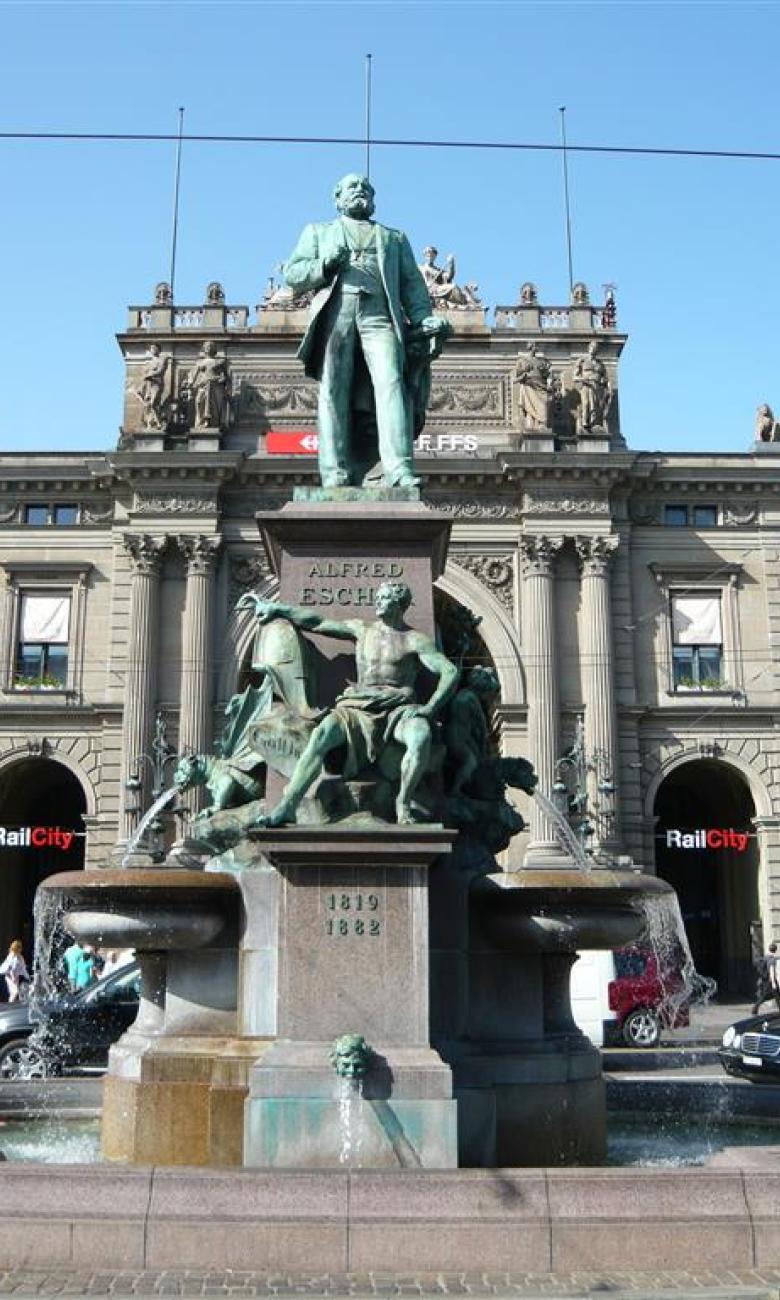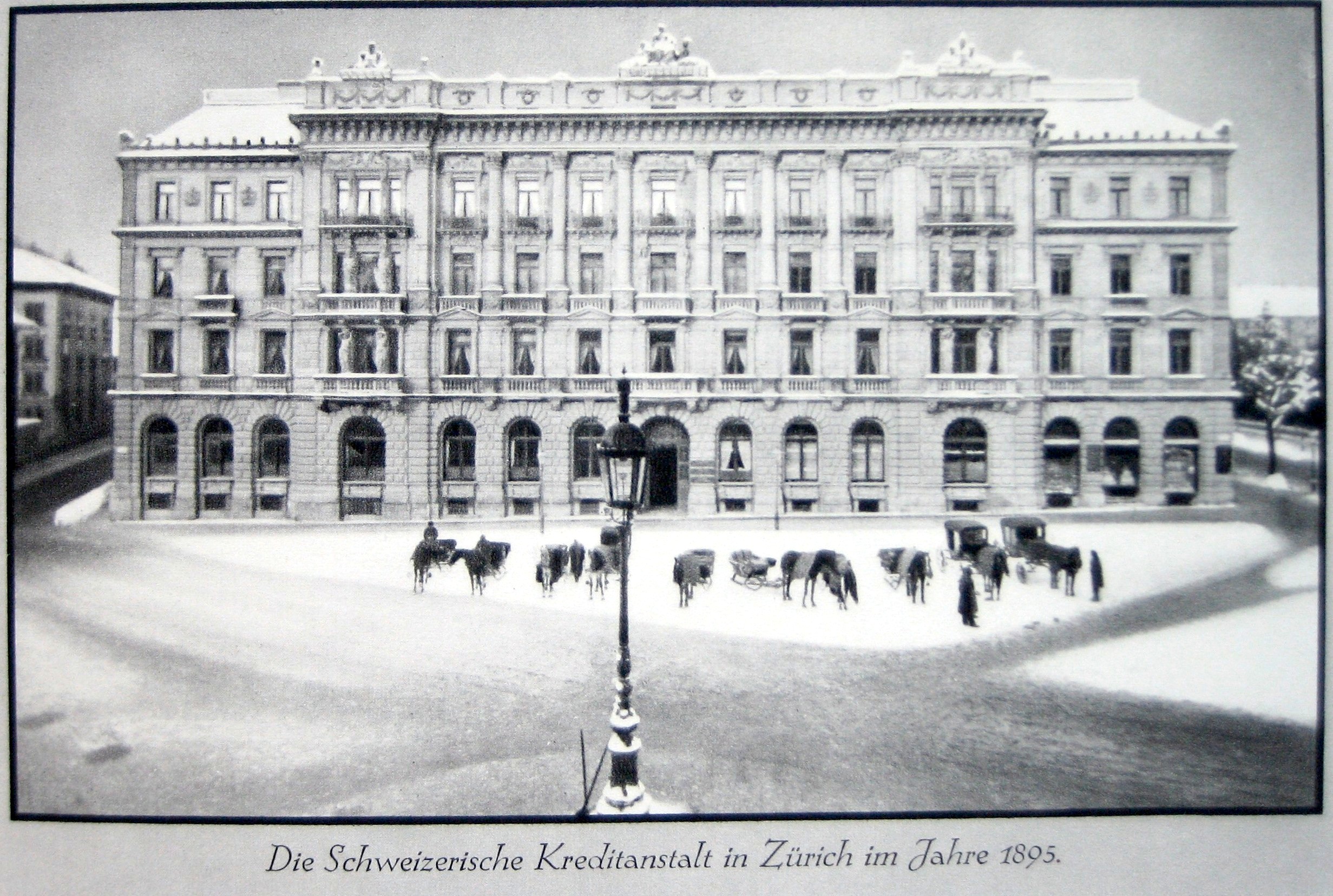Alfred Escher: a visionary of modern Switzerland
As a key figure behind the construction of the first Gotthard tunnel as well as the founding of the forerunners to both Credit Suisse and ETH Zurich, Alfred Escher had a profound and lasting impact on Switzerland's transition to the modern age. In the fledging Swiss federal state of the mid-19th century, one man emerged like no other in Swiss history to capitalise on the changes taking place and shape so much of the country's political and economic development. Here we look at the extraordinary and enduring achievements of Alfred Escher.
Alfred Escher was born on 20 February 1819 into an influential family of Zurich bankers and merchants. A branch of the Eschers vom Glas, it was one of the most distinguished families in old Zurich. Despite his privileged, conservative background, he pursued his political career as a progress-oriented liberal. His network of allies enabled him to become one of Switzerland's leading proponents of economic liberalism.

King Alfred I
Alfred Escher began his political career at a young age, at both the cantonal and federal level. In 1844 he was elected to Zurich's cantonal parliament, the Grand Council, representing the liberals. He remained a member of the Grand Council until 1882 and served as its president several times. Among other political offices, he served as a member of Zurich's cantonal government from 1848 to 1855.
Escher's rise through national politics was no less rapid. At just 29, he was one of the first men elected to the National Council of the new federal state. In 1848, aged 30, he was elected deputy president of the National Council, and in 1849 its president. He was elected to Switzerland's highest representative office four times, although health reasons prevented him from taking up the post on one occasion. Escher served on influential parliamentary committees, often as their president, and made strategic use of the power this brought. With his strong personality and extensive network of political and business relationships, Escher became one of the most influential politicians in the young Swiss federal state. He also faced severe criticism for his concentration of power, earning him the monikers 'Federal Baron', 'Railway Baron' and even 'King Alfred I' from his political opponents.
A railway pioneer
In the mid-19th century, Switzerland came close to being completely left out of the European railway network. Recognising the risk, Escher threw himself heart and soul into efforts to build railways across Switzerland.
The railway issue was a hotly debated issue. Two crucial questions were at stake: who was to build and operate the railways and who was to have the authority to grant railway concessions. Escher's considerable influence secured him a parliamentary majority. With the Railway Act of 1852 he achieved his goal of placing railway construction and operation in private hands rather than under state control. The concessions were granted by the cantons, not the federal government. In 1853 Escher, together with other railway pioneers, founded the Swiss Northeastern Railway, which would grow into Switzerland's largest railway company over the years.
The railway boom boosted demand for a skilled workforce to build this new transport infrastructure. Because Switzerland did not have any engineering and technical colleges at the time, Escher campaigned for the establishment of the Federal Polytechnic Institute. It was founded in 1854/55 and is today known as ETH Zurich and one of the world's top-ranking universities. The Federal Polytechnic Institute was the foundation stone for Switzerland's education and research landscape.

Transalpine project
While the Swiss railway network was greatly expanded in the 1850s and 1860s, there was still no north-south link. Escher initially supported another project, the Lukmanier railway from Locarno in Ticino to Chur in Graubünden, but ultimately backed the Gotthard project. Drawing on his business and political connections, he went on to achieve his greatest success with the realisation of the transalpine rail link. The Gotthard Railway Company was founded in 1871, with Escher as its chairman, putting him at the helm of what was then the world's largest engineering project. Growing criticism of the project's planning and implementation, combined with construction delays and massive budget overruns, would force Escher to step down in 1878. It was a painful humiliation from which he never recovered. He was not invited to the tunnel's ground-breaking ceremony in 1880.
When the landmark project was completed in 1882, Escher's name was not mentioned by any of the speakers at the lavish opening ceremony in Lucerne. By then, the aged politician and long-serving business leader was at home on his deathbed. He would never ride the Gotthard Railway. Foreign media praised the Gotthard Railway as the project of the century. The Gotthard Railway's key role in Swiss transport policy and in Switzerland's central position as a transit country for goods transportation across Europe continues to be recognised today. Historians have rehabilitated Alfred Escher and long recognised his achievement as the creator of the Gotthard Railway.

A new bank for raising railway capital
The railway boom also increased the need for capital to finance railway construction. The colossal amount of finance needed was only available abroad: no Swiss financial institution could provide funding of this magnitude. To gain more independence in raising capital for the Swiss Northeastern Railway, Escher set up a new investment bank, Schweizerische Kreditanstalt, in 1856. Now known as Credit Suisse, it has had its headquarters on Paradeplatz in central Zurich since 1877.

This modern bank not only functioned as a house bank for Swiss Northeastern Railway but also gave a powerful boost to railway construction across Switzerland. The new bank also increasingly financed other private enterprises outside the transport sector and evolved to become an important source of funding for the Swiss economy. In 1857 Escher's bank was also involved in the founding of Schweizerische Lebensversicherungs- und Rentenanstalt, Switzerland's first insurance and annuity institution, now known as Swiss Life, with the Schweizerische Kreditanstalt's capital serving as collateral. With Escher's support, in 1863 Credit Suisse and Swiss Life were joined by Schweizerische Rückversicherungs-Gesellschaft, today's Swiss Re. With Zurich as Switzerland's principal financial centre, these three financial institutions have remained the flagships of Swiss insurance and financial expertise to this day.
Legacy
Alfred Escher was a pioneer in the early days of the modern Swiss federal state. Through astute use of his political and business skills, he realised projects of immense significance for Switzerland. Both as an entrepreneur and politician, Escher was instrumental in Switzerland's modernisation in the 19th century. Even now, almost 200 years later, his achievements live on in the economic reality of present-day Switzerland – as a major financial centre, a rail freight transit country and a world-leading centre for education and research.
A statue of Alfred Escher stands outside Zurich's main railway station facing Bahnhofstrasse and Paradeplatz, the centre of business and finance, and further southwards towards the Gotthard Railway, which earned him a place in world history. And deservedly so!
This article draws on Joseph Jung's biography, 'Alfred Escher. 1819-1882. Aufstieg, Macht, Tragik' (Alfred Escher. 1819–82. Rise, Power, Tragedy), 6th edition, NZZ Libro, 2017. Abridged editions have been published in English, French and Italian.
Joseph Jung also examines Escher's life in his monumental history of Switzerland in the 19th century: 'Das Laboratorium des Fortschritts. Die Schweiz im 19. Jahrhundert' (The laboratory of progress: Switzerland in the 19th century), 2nd edition, NZZ Libro, 2020).




